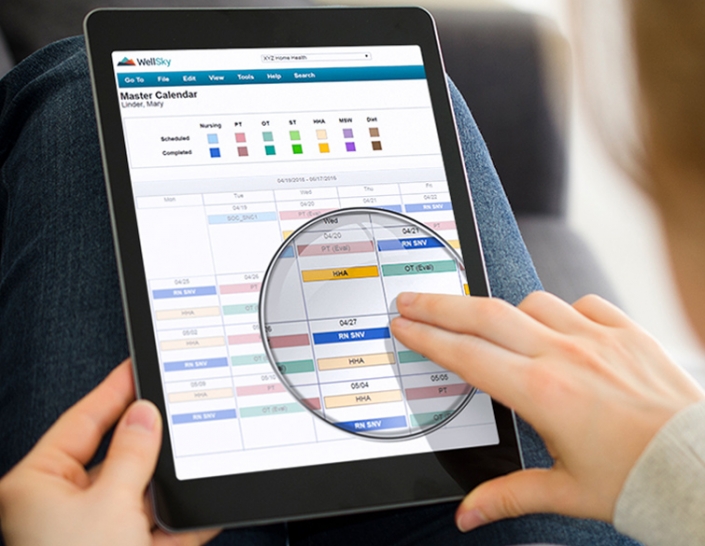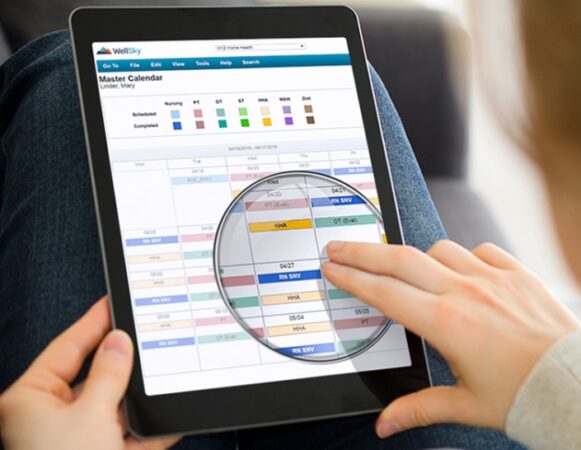
Home Health Software Overview
Home health software is a specialized type of healthcare software designed to streamline and enhance the delivery of home healthcare services. It provides comprehensive support for home health agencies, enabling them to manage patient care, improve communication, and optimize operations.
The benefits of using home health software are numerous. It can help agencies:
- Improve patient care coordination and communication among healthcare providers
- Streamline documentation and billing processes, reducing administrative burden
- Enhance patient engagement and self-management
- Gain insights into patient data and improve outcomes
Examples of home health software applications include:
- Patient management: Scheduling appointments, tracking patient progress, and managing care plans
- Documentation: Electronic health records (EHRs), progress notes, and medication management
- Billing: Insurance claims processing, invoicing, and payment tracking
- Communication: Secure messaging, video conferencing, and patient portals
- Analytics: Reporting and data analysis for quality improvement and operational efficiency
Features of Home Health Software
Home health software is a comprehensive solution designed to streamline and enhance the operations of home health agencies. It offers a range of essential features that cater to the specific needs of this industry, including patient management, scheduling, documentation, reporting, and analytics.
These features are crucial for agencies to deliver efficient and effective care, manage patient information securely, and optimize their operations. Let’s explore each of these key features in more detail.
Patient Management
Patient management is a fundamental aspect of home health software. It provides a centralized platform to store and manage patient information, including medical history, treatment plans, care instructions, and progress notes. This information can be easily accessed by authorized healthcare professionals, enabling them to make informed decisions and provide personalized care to patients.
Scheduling
Scheduling is another essential feature of home health software. It allows agencies to manage the schedules of their caregivers and patients effectively. The software can automatically generate schedules based on patient needs, caregiver availability, and agency policies. This helps ensure that patients receive the care they need at the right time, while optimizing caregiver utilization and reducing scheduling conflicts.
Documentation
Documentation is crucial for home health agencies to maintain accurate and up-to-date records of patient care. Home health software provides comprehensive documentation capabilities that allow caregivers to record patient assessments, progress notes, medication administration, and other relevant information. This documentation is essential for tracking patient progress, ensuring continuity of care, and meeting regulatory requirements.
Benefits of Home Health Software
Home health software offers a range of benefits that enhance patient care, improve efficiency, and reduce costs for home health agencies. Here’s an overview of these advantages:
Improved Patient Care:
- Enhanced coordination of care plans among multiple providers
- Real-time access to patient records for informed decision-making
- Automated reminders for medication adherence and appointments
Increased Efficiency and Reduced Costs:
- Streamlined scheduling and dispatching of caregivers
- Automated billing and claims processing
- Reduced paperwork and administrative burden
Streamlined Operations:
- Centralized patient data management for easy access and analysis
- Automated tracking of patient progress and outcomes
- Improved communication between caregivers and office staff
Challenges of Home Health Software

Implementing home health software can present several challenges for healthcare organizations. These include:
Data security and privacy concerns: Home health software often handles sensitive patient information, making it crucial to ensure robust data security measures are in place to protect against unauthorized access or breaches.
Staff training and support
To effectively utilize home health software, staff members require comprehensive training and ongoing support. This ensures they are well-versed in the software’s functionality and can leverage it to improve patient care.
Future Trends in Home Health Software
As technology continues to advance, we can expect to see significant changes in the home health software landscape. Emerging technologies such as AI, telemedicine, and remote patient monitoring are poised to revolutionize the way home health care is delivered.
Integration of AI
Artificial intelligence (AI) is rapidly becoming an integral part of home health software. AI-powered systems can automate tasks, analyze data, and provide insights that can help clinicians make better decisions. For example, AI can be used to:
– Identify patients at risk for falls or other complications
– Develop personalized care plans
– Monitor patient progress and outcomes
– Provide real-time support to clinicians
Telemedicine
Telemedicine is another growing trend in home health care. Telemedicine platforms allow clinicians to provide care to patients remotely, using video conferencing, secure messaging, and other technologies. Telemedicine can be used for a variety of purposes, including:
– Conducting patient assessments
– Providing follow-up care
– Monitoring patient progress
– Offering educational resources
Remote Patient Monitoring
Remote patient monitoring (RPM) is a technology that allows clinicians to monitor patient health data remotely. RPM devices can collect data on vital signs, such as heart rate, blood pressure, and blood glucose levels. This data can be transmitted to clinicians in real-time, allowing them to track patient progress and intervene if necessary. RPM can be used to:
– Identify patients who are deteriorating
– Prevent hospitalizations
– Improve patient outcomes
The integration of AI, telemedicine, and RPM into home health software has the potential to significantly improve the quality and efficiency of home health care. These technologies can help clinicians to provide more personalized and proactive care, while also reducing costs.
Selection and Implementation of Home Health Software
Selecting and implementing the right home health software is crucial for optimizing operations and delivering quality care. Here’s a comprehensive guide to help you make informed decisions:
Vendor Evaluation
Evaluate potential vendors based on:
- Experience and reputation in the industry
- Software features and capabilities
- Scalability and flexibility to meet future needs
- Customer support and training resources
- Cost and pricing models
User Feedback
Gather feedback from current and former users to gain insights into:
- Software usability and functionality
- Customer service and support
- Impact on workflow and efficiency
- Overall satisfaction with the software
Step-by-Step Implementation Plan
1. Assessment and Planning: Define software requirements, budget, and implementation timeline.
2. Vendor Selection: Evaluate vendors, conduct demos, and select the best fit.
3. Data Migration: Prepare and transfer existing data into the new software.
4. Training and Adoption: Train staff on software functionality and workflows.
5. Customization and Integration: Tailor the software to specific needs and integrate with other systems.
6. Monitoring and Evaluation: Track software usage, identify areas for improvement, and make adjustments as needed.





